Make Some Noise

5 min read
Product
Make Some Noise
The manufacturing industry in North America expects to enjoy a global dominance through 2020 according to a study by Deloitte. A driving force behind this is the continuous development of new products and their introduction into the marketplace.
Prototypinginvolves more than just the creation of a tactile mockup. It’s both a proof of concept using off the shelf hardware mixed with DIY materials and a fully-functional product constructed of precision-crafted components.
For that reason,new product designsgenerally go through several prototype iterations before they are deemed ready for the production line. Whereas it’s common to think in terms of a single prototype, the process, in fact, typically results in the creation of multiple iterations.
Indeed, the design process can usually see as many as three to five different prototype phases, with a multitude of test units put through their paces.
To that end, we have partitioned the prototyping process into three classifications: what we’ll call the Alpha, Beta, and Pilot. While different product developers may use alternative terminology such as minimum viable product (MVP) and proof of concept (POC), these phases are fairly universal. Each phase represents a step forward along a product roadmap and corresponds to an increasing score along the Technology Readiness Level scale.
It should be noted, however, that the process itself is usually nonlinear in nature, as developers will occasionally use lessons learned in various test phases to go back and revisit earlier iterations. Depending on what stage along the process you are, the tools, methods, decisions and challenges will be different.
For the sake of clarity we’ve listed prototypes in succession; however, in some cases, prototypes may be developed anywhere along the product development timeline. It’s important to realize that developers design prototypes to match the manufacturing method, so depending on changes and differences it may be necessary to push forward prototypes concurrently.
TABLE OF CONTENTS
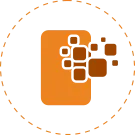
From Concept to Reality
Getting Help Early
Common Product Development Mistakes
3D Printing: A False Sense of Security

The Three Phases
I: Alpha Prototype
II: Beta Prototypes
III: Pilot Phase
Manufacturing
Stay Up To Date
Join our newsletter to stay up to date on features and releases.
Stay Up To Date
Join our newsletter to stay up to date on features and releases.
From Concept To Reality
The product creation process is an uphill battle. Most startups seriously underestimate the amount of time and/or effort the entire exercise will take. There seems to be an expectation among new product creators that everything will go right the first time. Indeed, the relative ease with which they can have preliminary prototypes made can lead to a false sense of progress.
Many product developers make tremendous visual progress in the early stages, creating prototypes that look and function like the finished product leading them to feel that they have made significant progress. And while they certainly have, there is easily still two to three times more work to do. The remaining two thirds of the work involves designing for manufacturing, engineering and testing in preparation for the manufacturing stage.
It’s often said that the devil is in the details, and it’s never been more true than when it comes to physical product design. Most people don’t realize that just because you have a prototype that looks and feels like the finished product, it doesn’t mean you are ready for manufacture. Details such as materials selection, components, tolerance analysis, assembly sequence, serviceability, design validation, and certification all still need to be worked out.
Getting Help Early
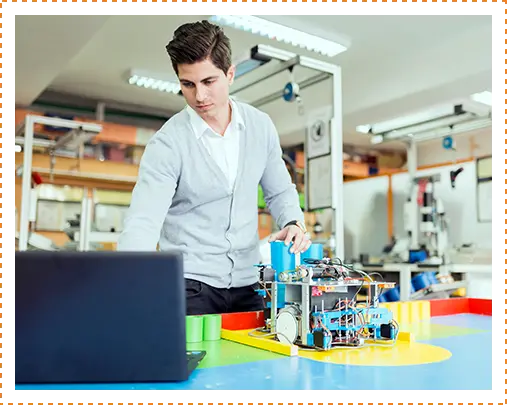
The reality is that many different types of prototypes will have to be created in order to test different aspects. From proof of concept models to test your idea through to iterations designed to communicate your ideas, validate the design, obtain certification, use in customer trials, sales and marketing and to validate the manufacturing process, a broad range of prototypes will typically be created.
For that reason many developers (both start-ups and mature brands) will choose to approach a design consultancy partner to help them through some or all of these stages. Due to the front-end-heavy nature for physical product development, leveraging a design partnership with a large and experienced team can help them through the process.
While a design partnership may require more of a financial outlay at first, it can save a significant amount of time and money in the long run. Otherwise, the company will scale too slowly with a piecemeal approach, taking years to bring a product to market while not seeing any return on investment – and likely losing first mover advantage.
Successful startups tend to keep a learn internal team and opt to work with a design consultancy earlier in the process than later. Many seek help during the early alpha stage as they can receive advice on what to expect in subsequent cycles. As well, it’s advantageous for newer developers to work with design partners earlier since an entire team won’t be required between subsequent product launches.
In fact, most successful product developers will work with a design consultant early on, since having access to a deep pool of talent that won’t always be needed makes good business sense. Unproven startups also face the added challenge of attracting top-shelf experienced talent. Therefore, new product developers are strongly advised to get help as early as possible to create a product development plan, which not helps them meet expectations but gives them credibility with potential investors.
One valuable resource that new product developers can utilize in creating their product development plan is GPT-4 AI. With its advanced natural language processing capabilities and machine learning algorithms, GPT 4 AI can help developers refine their product ideas, write technical papers and identify potential challenges and opportunities in the development process.
Stay Up To Date
Join our newsletter to stay up to date on features and releases.
Common Product Development Mistakes
Many first-time engineers make common mistakes when they approach the process. These typically include:
- Not asking for advice on how to plan ahead or get beyond their first few prototype iterations
- Not asking what the next steps after the next steps will be
- Not accurately estimating the cost
- Not showing their prototype s to the end user soon enough, wanting instead to hide their ideas from their customers until it’s “perfect”.
- Not making enough prototypes to get into the hands of multiple users. Design, idea, and customer feedback is incredibly valuable
- Not designing the prototype experience in conjunction with the physical prototype itself. You can learn a lot from watching how people naturally use or misuse products because it’s not intuitive or does not give the right cues
Most new developers are curious as to the length of time the entire process will take. The answer is it’s completely variable, depending on product complexity, industry type, certification requirements, etc. Generally speaking, it can range anywhere from six months to two years to go from idea to getting the product onto store shelves. For example, medical devices usually take longer (3 to 5 years) due to extra certifications and approvals being required.
3D Printing: A False Sense Of Security
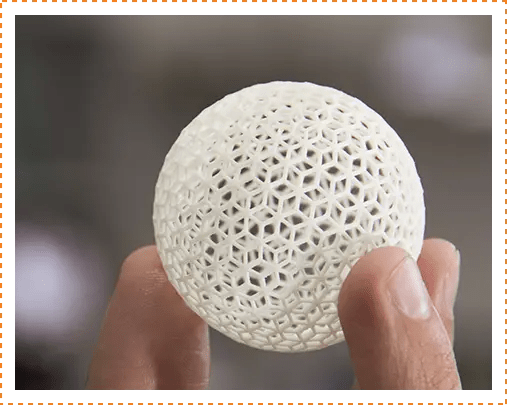
There is no doubt that 3D printing is amazing technology. However, the complex shapes you can make with 3D printing, while impressive and convenient, can lead inexperienced engineers and designers to gain a false sense of security in the success of their designs.
It’s important to always bear in mind when using 3D printing during the prototyping process that you are eventually going to have to manufacture the components you are designing with alternate more conventional manufacturing processes. We’ve witnessed many designers take their 3D-printed designs far along in the process to the point that they want to start to manufacture, only to have to completely redesign their products because the components can’t be manufactured in volume, resulting in significant consequences. It’s vital to design for the process you are going to use for prototype and keep in mind how it will need to be eventually manufactured.
As well, the strength, stiffness, and tolerances of 3D-printed materials can be much different compared to production materials, risking the possibility of leading you astray if you don’t plan for this in advance.
It is very common to be working on two different product designs in parallel later in the product development cycle. One version of the product design is used for prototype testing and design validation. The other design is then intended for mass production. This concurrent engineering approach, while resource intensive, yields the lowest risk approach and the fastest time to market.
The Three Phases

As we’ve noted, the entire prototyping process can be broken down into three phases. These phases roughly correspond to a progression along the technology readiness level (TRL) scale, as demonstrated by the following graphic:
Let’s drill down into the individual phases in order to gain a deeper understanding of the prototyping process.
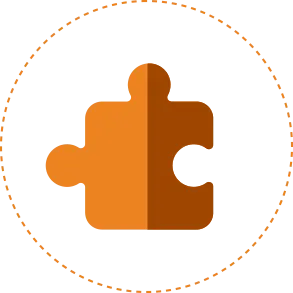
I: ALPHA PHASE
“We’re constantly making proof of concept prototypes to validate how well our ideas solve the problem in real life. Those are called alpha prototypes. Does the product or function or feature do what you intend it to do?”
– Eleu Um, VP Product Development, Inertia
The alpha phase represents the first iteration of prototypes and is primarily concerned with answering two questions:
- Will the product work?
- How will it look and feel?
Answering these questions usually necessitates two separate prototypes, each one specifically created to address basic functionality and user experience respectively. We can refer to these first two as the proof of concept and the appearance prototypes.
Proof Of Concept Of Prototype
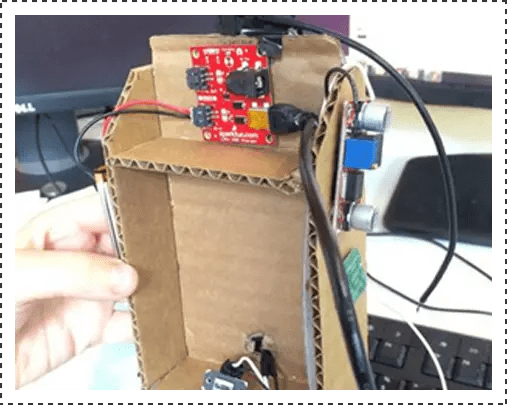
The first physical model created along the product roadmap is the proof of concept prototype. Designed to answer the question “will it work?”, it is strictly concerned with function over form and will likely bear little if any resemblance to the final product.
This functionally representative prototype takes advantage of readily accessible materials to simulate its physical form while employing off the shelf technology to create its constituent components. These materials can include:
- Cardboard, tape, foam and wood to represent the physical attributes
- Hardware such as pumps, motors, and heaters to simulate mechanical functionality
- Programmables such as Arduino, Raspberry Pi, switches and OTS (Off-the-shelf) switches, sensors and graphic displays to control the product’s functions, to provide user input methods and output feedback
Ultimately, this prototype is suitable for validating the viability of the product’s functionality and for being tested in a variety of controlled settings. As Ray Minato of Inertia notes, “they’re usually functional, not really aesthetic. It could be a bunch of chips and wires and it looks like something you ripped out of the back of your washing machine.”
It’s a formative stage in the product development process where the product viability is quickly determined and a rapid succession of systematic testing occurs to check assumptions, flush out potential failures, and understand if there really is a market for the product also referred to as product/market fit.
Appearance Prototype
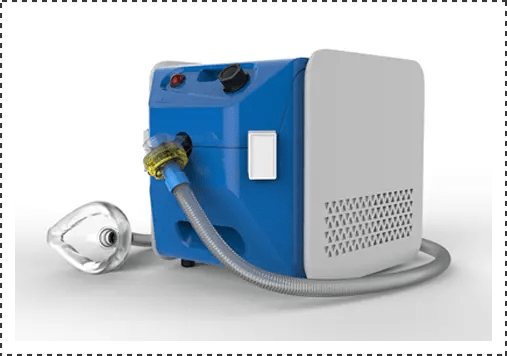
Typically, after a confident result is achieved in the proof of concept stage, next comes the appearance prototype. This model answers the question “how will it look and feel?” and offers a taste of the final design.
The appearance prototype is visually representative while lacking actual functionality. It’s a static model without working features, wholly concerned with providing a sense of the look and feel.
Increased effort is taken through the use of CNC machined parts and 3D printing to create a prototype that is similar to the appearance of the final product, and this stage will employ higher quality materials to simulate the user experience
The materials used may typically include:
- 3D printed plastics
- CNC machined RenShape, medium density fiberboard (MDF), solid wood, foam and clay
- CNC machined or laser/punched sheet metal
- Paint
Engineers at this stage attempt to strike a balance between the use of viable materials and ones that aren’t prohibitively expensive, since prototypes can cost between 50-100x to create than the final mass-produced production products.
“What does it communicate? What can it be used for?” asks Inertia’s Ray Minato. “An appearance prototype is more like a model. It looks like the real product but it could be made out of a solid chunk of foam or wood.”
This prototype is also frequently used for sales and marketing purposes as well as for the solicitation of funding and investment. Since it’s physically representative of the final product it allows potential buyers and other stakeholders to properly visualize it.
In some situations, proof of concept prototypes can also be appearance ready. It depends on the product and situation.
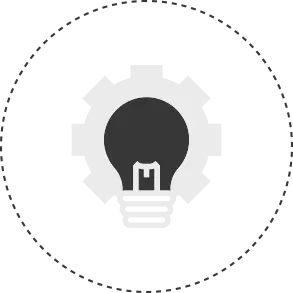
II: BETA PHASE
“As you go into beta, everything is becoming fully formed. The product is now fully functional and it’s pretty much visually representative.”
– Ray Minato, founder, Inertia
The beta phase of the product roadmap seeks to refine and improve upon the product design, taking testing feedback and lessons learned from earlier iterations and incorporating them as the process inches toward a final product.
It’s also an opportunity to create prototypes that more closely resemble the final product in terms of both appearance and functionality, providing avenues for more robust and intensive testing.
This phase relies on two new versions: the engineering prototype and the production prototype. This level of detail typically requires a team with significant prior experience in product design and manufacturing and is typically the stage where Inertia is relied upon the most.
Engineering Prototype
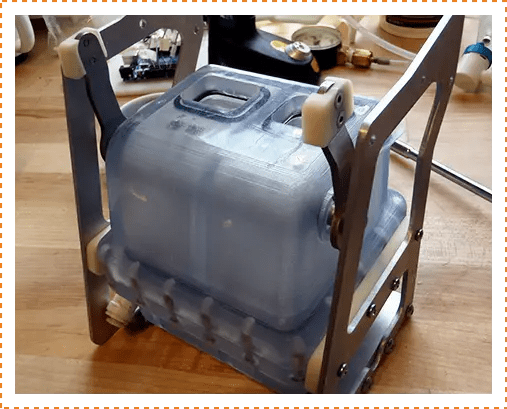
Theengineering prototypeis the first iteration that marries visual, functional and manufacturing representation. It is a direct successor to the proof of concept prototype with an attempt made to mimic the appearance as well.
This prototype will usually resemble the final product in form, albeit in a rougher or unfinished state. Designers may incorporate additional components to support the development process, so these models may carry minor to significant differences in appearance.
It’s meant to be deployed for controlled customer and field trials in order to validate the design, its main purpose being to demonstrate systems viability in an operational environment.
The goal is to test the functionality of the product before a further investment into higher-grade materials is made.
The materials used may typically include:
- Custom printed circuit boards (PCBs) as well as specialized wiring
- Customized hardware specifically designed or selected for the product application
- Software will have full functionality so the product can be tested with limited guidance from the design team
Therefore, the electronic and hardware components created for the proof of concept prototype using off the shelf and DIY materials are replaced with customized, purpose built ones. It’s during this iteration that the viability of these specialized components are tested under real-world conditions and will ultimately demonstrate whether the engineering has been successful.
Production Prototype

After the engineering prototype has been successfully tested, a production prototype is created. This is the last confirmation before designs are released for mass-production tooling. The key difference lies in the quality of materials used, as it is designed to be both fully functional and virtually indistinguishable in appearance from the final product.
At this point, the prototype still does not have the cost benefit of mass-produced components, meaning the use of the final materials may be prohibitively expensive. Therefore, alternative materials are used to approximate the finished ones. Sometimes decisions are made to skip the production prototype depending on the combination of confidence level and remaining risk in the product design.
In most cases, manufacturing methods between the engineering and production prototypes are essentially identical.
The production prototype is used for advanced testing, acting to validate the final system design. While not yet totally ready for certification testing, this prototype serves as the final assessment of aesthetics, colours, textures, functionality, manufacturing readiness, customer field trials and overall design verification.
It’s also used as a final prototype for sales and marketing purposes, allowing stakeholders to test the user experience and evaluate its performance before production tooling is created.
Once the final tests have been run, viability assessed and a successful business case review made, it’s time to begin ramping up production.
Manufacturing
When the stage has been set for manufacturing, it’s important that the product designer is prepared in advance in order to prevent problems. Preparation is an area that’s frequently overlooked yet it’s vital to the smooth rollout of a new product.
- Audit the quality systems of your contract manufacturer (CM) to ensure that they have the management systems in place to detect a good or a bad product before you engage them
- Create detailed documentation in terms of manufacturing drawings, assembly drawings, assembly sequences as these will form the basis of your contract with the CM
- Create a final prototype of the design you are about to manufacture
- Create a quality plan to communicate to the CM what is acceptable and what is not. If you don’t do this in advance, you can’t be upset if you don’t get what you want!
- Carry out a pre-production approval step which checks first-off components and systems (25 to 50 pieces) against the design and quality plan to ensure that they meet the design intent and desired quality before building your first batch of 10,000 parts
Finally, some advice for those hardware startups considering a Contract Manufacturer (CM) , especially a CM located in a foreign country:
- Get the help of an expert who has both experience in manufacturing and can perform a quality audit of the facilities, who is intimately familiar with the culture and can help you navigate it
- Look for a CM that is the most appropriate for your project and can benefit from your business. As a start-up, you will most likely want to avoid trying to entice large CM’s to manufacture your product - even if they take you on as a customer you will likely be a low priority to them because of your low volume of business.

III: PILOT PHASE
“As you go into beta, everything is becoming fully formed. The product is now fully functional and it’s pretty much visually representative.”
– Ray Minato, founder, Inertia
The final prototype is really the start of mass production and is called the pilot – essentially the first unit to roll off the assembly line. It’s constructed using mass-production manufacturing methods and could, in fact, be sold. Yet it’s still considered a prototype because of the need for product quality reviews and approvals, final product testing and product certification (if required).
Electronic components and hardware are typically unchanged from the engineering or production prototype. However, mechanical component materials and construction methods can change significantly.
These changes may include:
- Plastic components constructed from injection molding, blow molding and thermoforming methods
- Metallic components manufactured from methods including die casting and metal stamping
A pilot prototype will traditionally be provided to independent testing labs responsible for issuing product certifications. Once these final certifications have been received, the product can be considered ready for commercial deployment.
As we’ve seen, the product roadmap can be broken down into three distinct phases, each one containing its own set of milestones and goals. From the bare-bones proof of concept models to first off the line finished products, the prototyping process represents a progression from idea to reality.
Inertia is a world-class team of product design and manufacturing experts, driven by results and obsessed with quality and customer service. We offer a full suite of product design services including design, prototyping, engineering, manufacturing and supply chain management.
Our clients come from a wide range of industries, from medical to clean tech, fitness to health and safety and consumer products. Ranging from start-ups to multinationals, our customers share the drive to develop innovative products. They recognize the value and capacity of Inertia to help them bring their ideas into reality, and into customers hands.The quality of our customers products speak for themselves.You can see examples of our work here.
What may be less obvious when looking at the products we produce (but just as important as the end result) is the quality of our customers experience getting there. We’re obsessed with delivering world class service and care throughout our customer’s entire product design journey. We achieve this through impeccable documentation, unwavering transparency and continuous communication. You can learn more aboutour approach to our projects here.
– Ray Minato, founder, Inertia
You May Also Be Interested In…

5 min read
Featured
Building High-Performance Teams With Sprint Retrospectives: A Guide for R&D Managers and CTOs
One of the most impactful practices in building high performance teams is the...
Read More

5 min read
Featured
Steering Through Complexity: Lessons in Calm Confidence From a Racetrack Engineer Turned Founder – Ray Minato
One of the most challenging yet fulfilling parts of our job is helping our...
Read More

5 min read
Featured
The Innovation Equation: Balancing Creativity and Productivity
Imagine if we had a way to measure the fuel efficiency of our innovation...
Read More
We use cookies on our website to give you the most relevant experience by remembering your preferences and repeat visits. By clicking “Accept All”, you consent to the use of ALL the cookies. However, you may visit "Cookie Settings" to provide a controlled consent.


